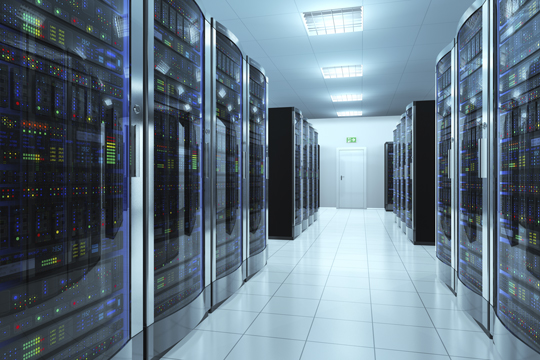Современные центры обработки данных чрезвычайно сложны в технологическом плане, и для поддержания их безопасной и эффективной работы требуются постоянный тщательный мониторинг и управление.
Поддержание правильной температуры — одна из важнейших задач, стоящих перед руководителями центров обработки данных. Если температура и влажность в центре обработки данных превышают допустимые значения, может начать образовываться конденсат, что повреждает оборудование. Это может привести к серьёзным повреждениям и сбоям в работе, поэтому этого следует избегать любой ценой. К счастью, существуют различные технологии, которые помогают поддерживать температуру в центре обработки данных на нужном уровне.
Существует множество способов охлаждения центра обработки данных. Косвенное воздушное охлаждение использует наружный воздух, но благодаря использованию воздухо-воздушного теплообменника наружный воздух циркулирует в отдельном контуре, обеспечивая охлаждение без попадания в серверную.
Преимущество методов косвенного охлаждения заключается в том, что они не загрязняют воздух снаружи помещения загрязняющими веществами и влагой. Теплообменник разделяет оба потока воздуха, одновременно передавая тепло изнутри здания дата-центра наружу. Таким образом, наружный и внутренний воздух никогда не смешиваются.
Сухого охлаждения обычно достаточно, если центр обработки данных расположен в зоне с постоянной низкой температурой, то есть без использования воды. Однако распыление воды на стороне теплообменника, обращенной к окружающему воздуху, создает эффект испарения, что приводит к снижению температуры воздуха в помещении. Этот метод называется косвенным испарительным охлаждением (КИО).
Идеально подходящая для тёплого и сухого климата, система IEC обеспечивает превосходный потенциал охлаждения при низких эксплуатационных и первоначальных затратах. Летом обычно наблюдается снижение температуры окружающего воздуха на 6–8 °C (10–15 °F). IEC обеспечивает экономию энергии до 28% по сравнению с традиционным естественным охлаждением и 52% по сравнению с альтернативными системами естественного охлаждения с воздушным охлаждением.
Для испарительного охлаждения требуется пластинчатый теплообменник, сочетающий высокую эффективность с низким падением давления, обеспечивающий надежную защиту от коррозии и герметичность. Перекрёстноточные теплообменники отвечают всем этим требованиям, обеспечивая при этом исключительную холодопроизводительность.
Наши теплообменники с перекрестным током, особенно с технологией испарительного охлаждения, представляют собой эффективную, недорогую и экологически чистую альтернативу традиционным методам охлаждения.
